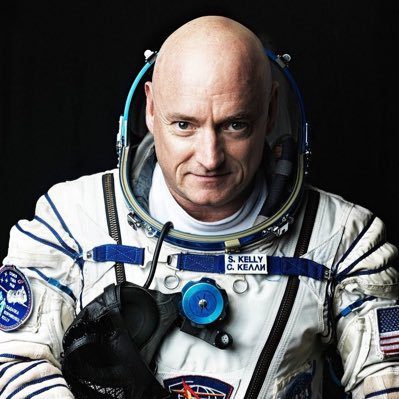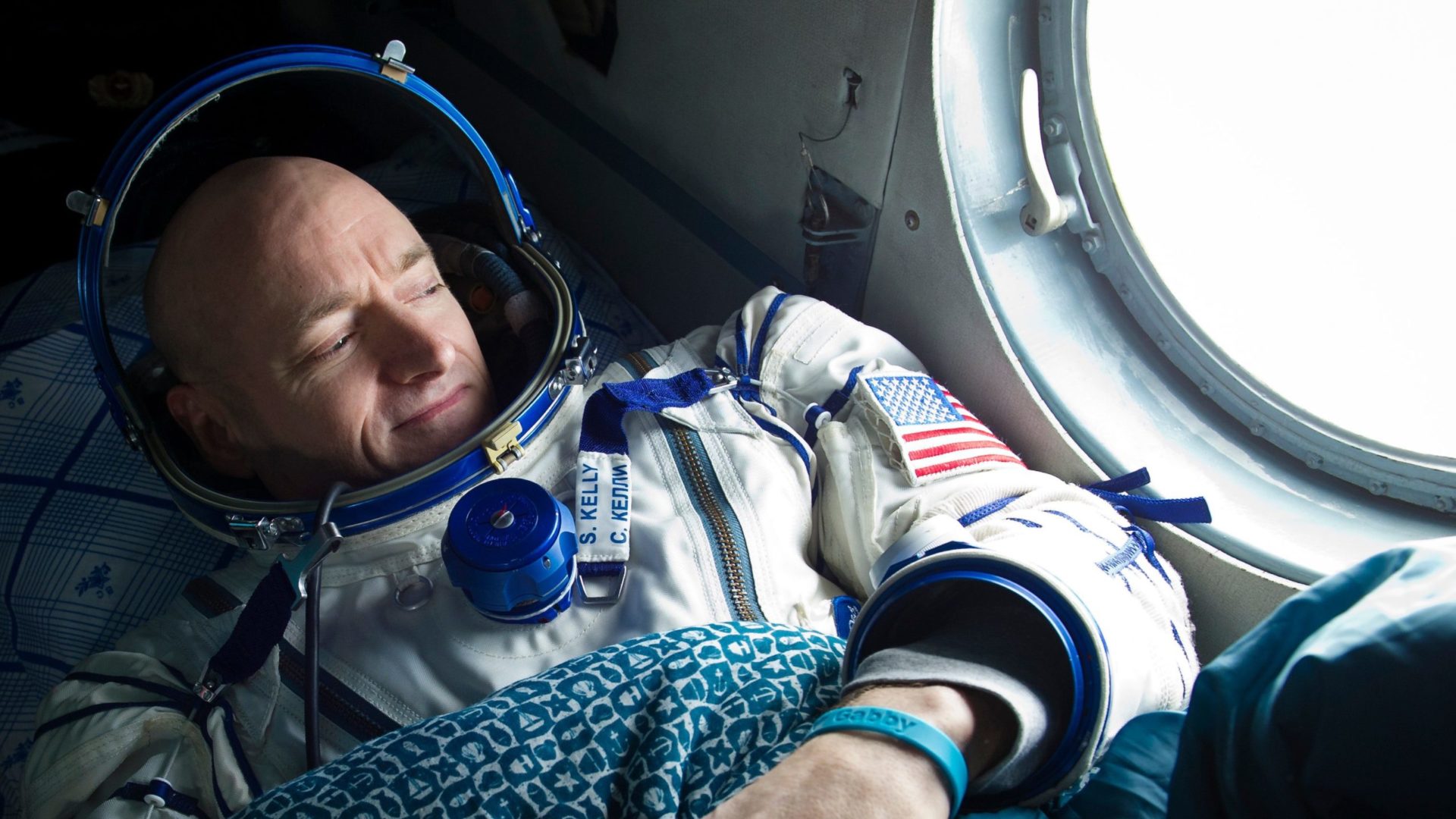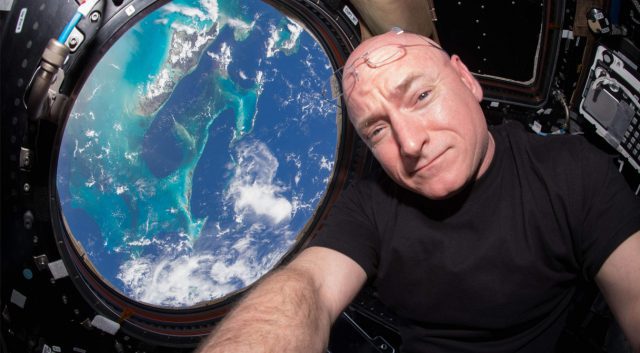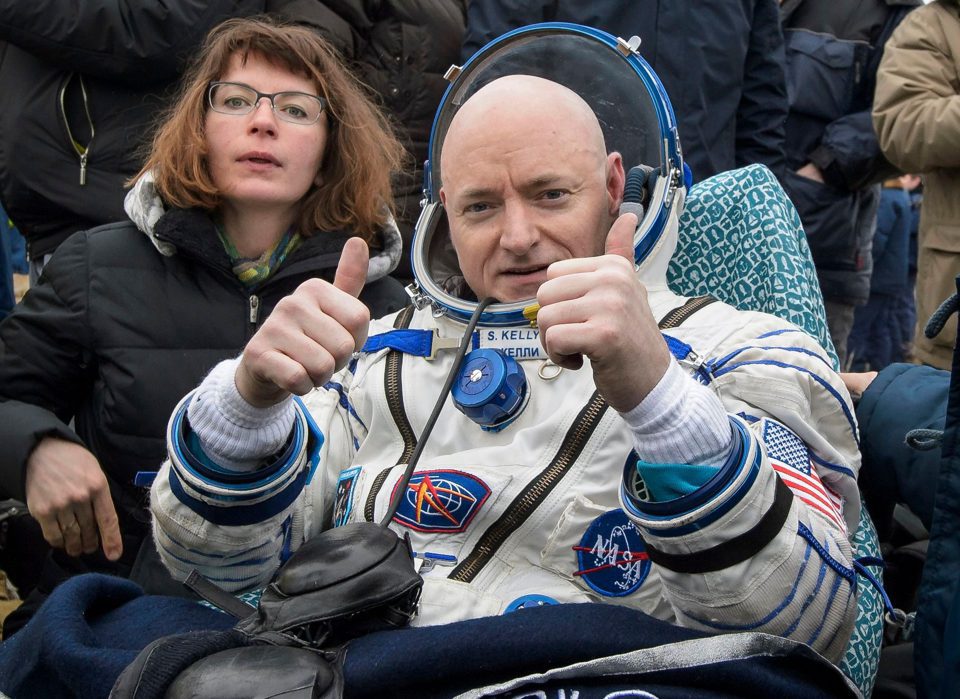(uskings.us) NASA astronaut Scott Kelly completed a single mission aboard the International Space Station of 340 days on March 1, 2016.
Scott Kelly was born, along with his identical twin brother Mark, on February 21, 1964, in Orange, New Jersey, to Patricia (McAvoy) and Richard Kelly.

After graduating from high school, Kelly enrolled at the University of Maryland, Baltimore County. During his freshman year, Kelly read The Right Stuff by Tom Wolfe, and was inspired to pursue a career in naval aviation. After his freshman year, Kelly transferred to State University of New York Maritime College, where he received a Naval Reserve Officers Training Corps (Navy ROTC) scholarship. After his sophomore year, Kelly sailed again on Empire State V. He served as the student battalion commander for his school’s Navy ROTC detachment and graduated with a Bachelor of Engineering degree in electrical engineering in 1987. Kelly later earned a Master of Science degree in aviation systems from the University of Tennessee.

In 1995, Kelly and his brother applied to NASA to become astronauts. He and Mark were selected to become astronaut candidates in April 1996; the first relatives to be selected in NASA history. Kelly’s first spaceflight was as a pilot of Space Shuttle Discovery during STS-103 in December 1999. This was the third servicing mission to the Hubble Space Telescope, and lasted for just under eight days. Kelly’s second spaceflight was as mission commander of STS-118, a 12-day Space Shuttle mission to the ISS in August 2007.

Kelly’s third spaceflight was as a crew member on Expedition 25/26 on the ISS. He arrived at the ISS aboard Soyuz TMA-01M on 9 October 2010, and served as a flight engineer until he took over command of the station on 25 November 2010 at the start of Expedition 26. Expedition 26 ended on 16 March 2011 with the departure of Soyuz TMA-01M.
In November 2012, Kelly and Russian cosmonaut Mikhail Kornienko were selected for a year-long mission to the ISS. Their year in space began with the launch of Soyuz TMA-16M on March 27, 2015, and they remained on the station for Expeditions 43, 44, 45, and 46. The mission ended on March 1, 2016, with the departure of Soyuz TMA-18M from the station.
According to en.wikipedia and nasa.gov. Source of photos: internet








